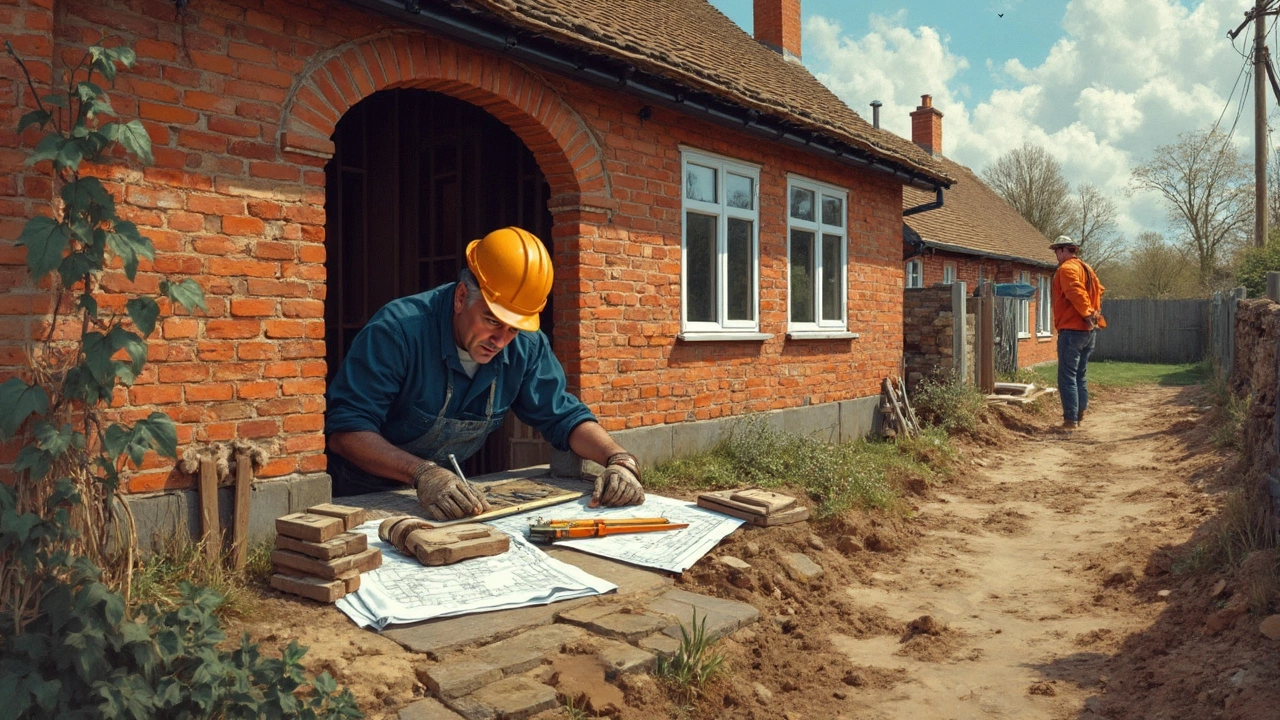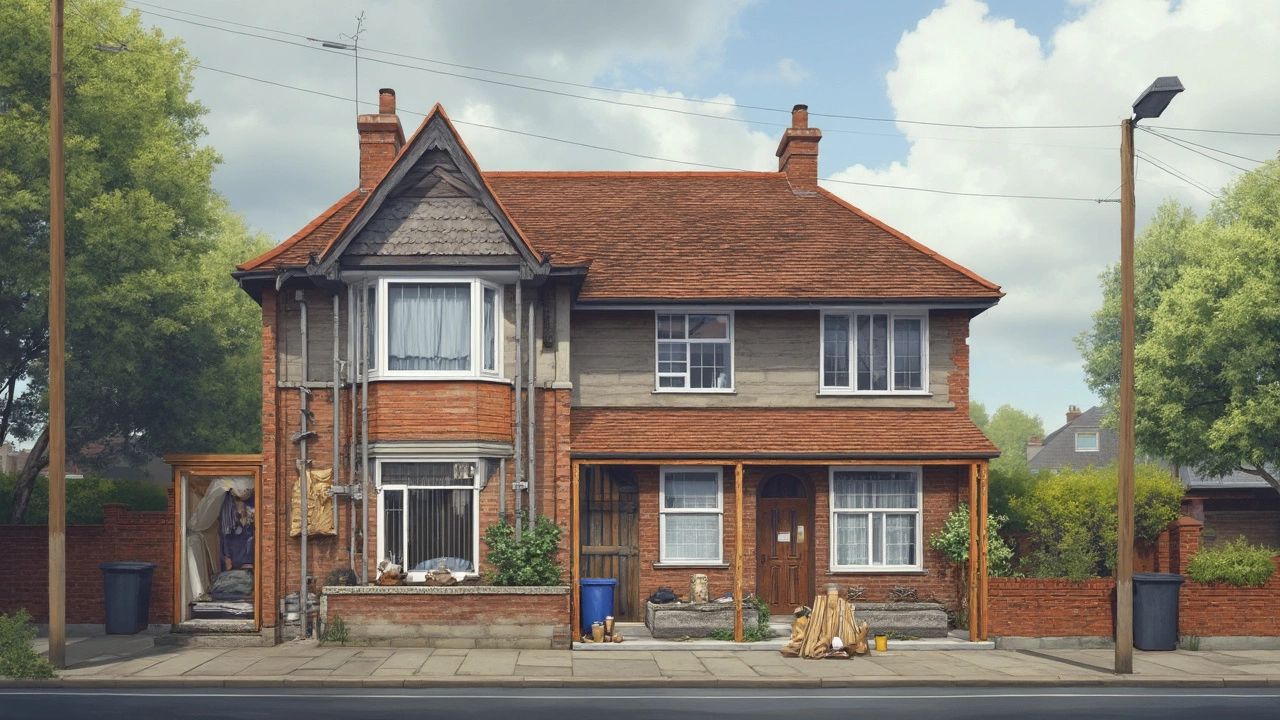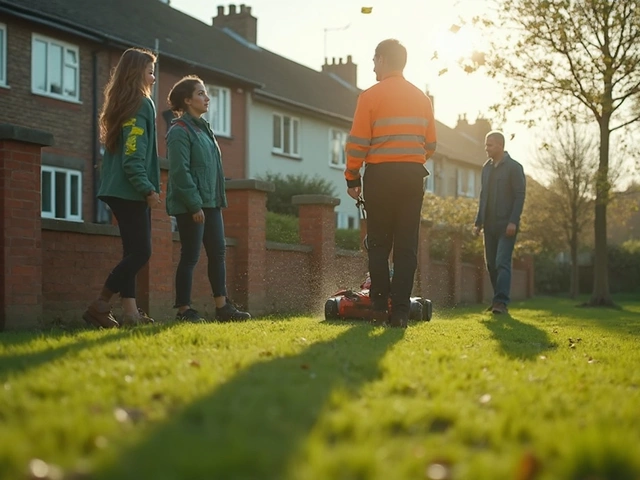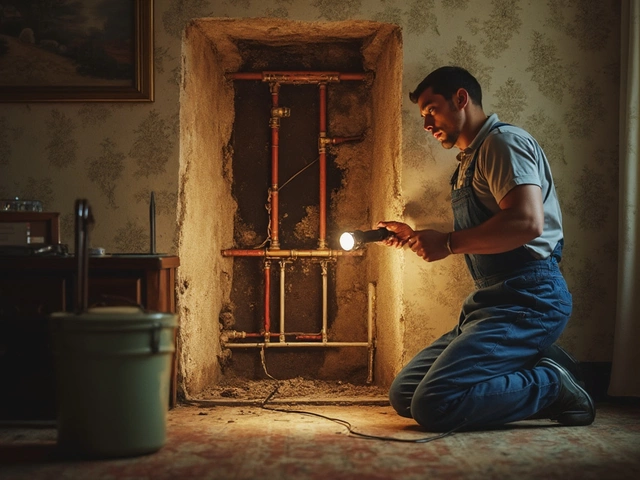Dealing with foundation cracks can be a real headache, right? Whether it's a tiny hairline fracture or a bigger gap, knowing the best way to fix it can save you a ton of trouble down the line. So, where do you start? Do you tackle the problem from inside your home or do you head straight outside? This question isn't just about preference; it's about results.
First off, let's get the basics straight. The decision to repair from the inside or outside depends a lot on the type of cracks you’re facing. Are they vertical, horizontal, or some kind of mystery ‘zigzag’ pattern? Each type suggests something different about the underlying issue. And, let’s not forget environmental factors—like heavy rain or pesky tree roots—that can influence what method works best.
- Understanding Foundation Cracks
- Inside Repair: What to Know
- Outside Repair: Pros and Cons
- Cost Considerations
- Making the Right Choice
Understanding Foundation Cracks
So, what’s the deal with foundation cracks? They're more than just a cosmetic issue—they can be signs of deeper problems lurking in your home's structure. Foundation cracks come in various forms: vertical, horizontal, and diagonal. Each type can tell a story about what's happening under your house.
Vertical cracks, for instance, are usually the least concerning. They often occur because of normal settling as the house ages. However, if they're more than a quarter of an inch wide, that's your signal to pay attention. Now, horizontal cracks—those are the ones to watch closely. These can indicate serious pressure from the outside, maybe due to soil that's expanding. Diagonal cracks often create confusion. They often appear because of uneven settling, say when one part of your home tries to sink faster than the rest.
Are you curious about what drives these cracks to misbehave? Well, weather is a huge factor. In regions with heavy rainfall, increasing groundwater pressure can push against your foundations. Not to mention, tree roots can sneak under your house, causing uneven pressure and leading to potential cracks.
Don’t underestimate the impact of foundation repair decisions. The kind of crack you have not only helps you decide whether to repair from inside or outside but also how urgently you need to act. It’s like playing a game of house doctor, with the right diagnosis being key to a healthy home.
Inside Repair: What to Know
Tackling foundation cracks from the inside can seem like the quick and easy route, but is it always the right choice? Let’s break it down. The main perk of inside foundation repair is that you generally avoid tearing up your yard—saving your lawn, garden, or that patio you love. Plus, it's usually cheaper because you're working within the home.
When you opt for an inside fix, most of the time you're looking at injecting the cracks with some form of sealant, like epoxy or polyurethane. Why these materials? Well, they’re flexible and can expand with the crack, offering a decent barrier against moisture. But here's a heads up: while they might stop water from seeping in, they don’t always address the root cause of the problem. If your home is sitting on shifting soil, for instance, you might just be putting a Band-Aid on a bigger issue.
One thing to keep in mind is the type of sealant used. Epoxy, for instance, is super strong—perfect for structural repairs. On the flip side, polyurethane foam is more about water prevention, ideal for those pesky moisture issues.
- Pros: Cost-effective, less invasive, quick turnaround.
- Cons: Can be a temporary fix, might not address underlying causes.
To sum it up, going the inside route for foundation cracks might be suitable if you're dealing with minor issues or looking for a temporary solution before deciding on a more extensive repair. However, if there's soil trouble or other structural concerns, this approach might need to be paired with something more comprehensive.

Outside Repair: Pros and Cons
Thinking about tackling those foundation cracks from the outside? It's not a bad call, especially if you're looking for a more permanent fix. Outside repairs might seem like a big project, but they can really make a long-term difference.
One major advantage of outside repair is that it addresses the root cause of the problem. For example, many cracks are caused by water pressing against the foundation from the outside. By digging around the foundation and applying waterproof membranes, you protect the entire structure from future water damage. Plus, you can fix any drainage issues that may have caused the crack in the first place.
But, it's not all sunshine and rainbows. Outside repairs can be pretty costly and time-consuming. You're looking at a messier job that might involve heavy machinery and potential landscaping changes. It might take a few days, and if you're paying for labor, it’s something to consider with your budget.
- Pros: Long-lasting solution, tackles root causes, prevents water damage.
- Cons: Expensive, labor-intensive, disruptive.
However, if preventing further foundation issues is a priority and you’ve got the resources, this outsider route might be worth every penny. Consider speaking to a professional who can assess your home’s specific situation because every home—and every crack—is unique!
Cost Considerations
Alright, let's talk dollars and cents because, ultimately, fixing foundation cracks isn't just about choosing inside or outside methods—it's about what fits your budget. First up, inside repairs are generally lighter on the wallet. These usually involve injecting epoxy or polyurethane, and you’re looking at a ballpark of $500 to $3,000, depending on the damage's extent.
On the flip side, outside repairs can make your bank account groan a little more. Excavating around the foundation, applying waterproofing materials, and doing a proper drainage setup could set you back anywhere from $5,000 to $10,000 or more. The hefty price tag does come with the possibility of a more long-term fix, which can be worth every penny in the long run.
Let’s throw a few numbers into the mix to make it clearer:
| Repair Method | Average Cost |
|---|---|
| Inside Epoxy Injection | $500 - $1,500 |
| Outside Excavation and Waterproofing | $5,000 - $10,000+ |
Don’t forget about those hidden costs. Inside repairs, though less expensive initially, might lead to additional fixes down the line if they don't solve the root problem. An outside job, albeit more expensive upfront, often gets to the root and involves preventive measures to deal with those pesky root causes like water drainage.
Finally, before swiping your card, consider getting multiple estimates. Talk to a few contractors, ask what they include in their services, and maybe even read online reviews. It's your house, after all, so protecting your investment with smart spending is the name of the game.

Making the Right Choice
So, how do you decide if fixing foundation cracks from the inside or outside is better? It boils down to a few key factors like crack type, urgency, budget, and long-term plans for your home. Let’s break it down.
First off, think about the type and severity of the crack. Small vertical cracks might be handled from the inside using injection methods. This tactic is often quicker and less intrusive, especially if you’re living in the home. However, if the cracks seem horizontal or serious, heading outside might be the safer bet. Exterior repairs involve digging around the foundation and can better address drainage issues that often cause these cracks.
Your budget is another major player in this decision. Inside repairs are usually less costly up front because there’s no excavation work. On the other hand, outside repairs, while initially pricier, could offer a more permanent fix. It’s kind of like the difference between a patch job and a full renovation.
Also, consider the climate where you live. In areas prone to heavy rains or frost, outside solutions might protect against future cracks caused by water seepage and soil movement. If your home is in a milder climate, an inside repair might hold up just fine.
Finally, are you planning to sell in a few years, or is this your ‘forever’ home? If it’s the former, a quick inside fix might help you pass inspection without breaking the bank. But for long-term peace of mind in your forever home, investing in a solid outside repair might be worth it.
Here’s a quick checklist to help you decide:
- Assess crack type: Vertical or minor? Consider inside. Horizontal or major? Go outside.
- Check your budget: Short-term solution or long-term investment?
- Evaluate climate impact: Does weather exacerbate your issues?
- Long-term plans: Temporary fix or permanent peace of mind?





